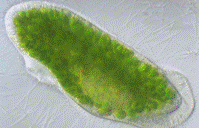Biological Sciences, School of

School of Biological Sciences: Faculty Publications
Document Type
Article
Date of this Version
12-2001
Citation
Tyre, Tenhumberg, Niejalke & Posingham in the Proceedings of the International Congress on Modelling and Simulation (Canberra, December 2001).
Abstract
Plants and aquatic invertebrates endemic to mound springs of the Great Artesian Basin (GAB) of Australia are of national biodiversity significance. Springs occur in groups, and current survey data suggest that local extinction and recolonisation within a group does occur naturally. Mound spring fauna are therefore good examples of true metapopulations, and any study of the environmental impacts on these systems must take this into account. Use of GAB water leads to drawdown of the pressure in the aquifer. This can potentially impact mound spring flora and fauna in two ways. First, as pressure decreases, so does flow from spring vents, and this causes the area of each of the patches in the spring group to shrink. If local extinction probability of a patch increases with decreasing area, this will increase the likelihood of extinction of a species in the whole group. Second, when pressure drops far enough, entire vents may cease to flow, decreasing the number of patches in the system. This change can lead to increases in extinction risk of a species, because the nature of the patch system is changing qualitatively. We model this system as a I" order Markov chain, and predict the risk of quasi-extinction under two different scenarios for modeling the effect of draw down on wetland areas.


Comments
Copyright 2001, the authors. Used by permission.